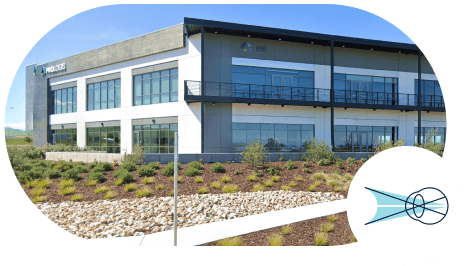Is There a Connection Between Nearsightedness and Macular Degeneration?

Myopia, also known as nearsightedness, is a common refractive error that can be corrected with eyeglasses, contact lenses, or surgery. It is a growing concern, especially as more severe myopia is associated with a type of macular degeneration known as myopic macular degeneration (MMD). This degenerative condition specifically targets the macula, the central part of the retina responsible for central, straight-ahead vision. Regular ophthalmology exams are crucial for all myopic patients to screen for MMD and other eye health issues.
Myopia’s Impact on the Retina
Myopia occurs when the length between your cornea (located in the front of your eye) and the retina (located on the back eyewall) is stretched, leading to a change in the eye's shape. This causes incoming light to be focused in front of the retina, rather than sharply on it, making distant objects appear blurry unless they are close up. Myopia typically develops in childhood but can also affect adults. The severity of myopia is measured in dioptres (D), with higher dioptre values indicating stronger prescriptions for correction. If you experience sudden sight loss in one eye, floaters, light flashes, or shadows in your peripheral vision, seek immediate medical attention.
How Myopia Damages the Macula
Individuals with severe myopia, often referred to as "high myopia" (typically -6 diopters or more), are at a higher risk for developing MMD, also known as pathological or degenerative myopia. MMD is an incurable condition that occurs when the elongation of the eyeball stretches the retina, leading to the eventual death of macular cells and the formation of a blind spot in the center of the visual field. Unlike age-related macular degeneration (AMD), age is not a significant factor in MMD, as it typically begins at a much younger age. MMD is associated with worsening myopia and genetics, often running in families and worsening with activities that require close-up work.
MMD shares similarities with AMD in that a "wet" form can develop, characterized by the growth of new, fragile blood vessels beneath the retina, a process known as neovascularization. When these vessels rupture, blood leaks into the macula, causing sudden distortions in central vision and blind spots. Similar to wet AMD, the treatment for this form of MMD involves injected anti-VEGF medications to inhibit the growth and leakage of blood vessels. Patients with MMD are also at risk for retinal detachment, a serious condition where the retina partially or completely detaches from its normal position. Symptoms of retinal detachment include the sudden appearance of floaters, flashing lights in the peripheral vision, and a curtain-like obstruction in the visual field, which should be considered a medical emergency.
Protect Your Vision with Retinal Consultants Medical Group
For expert care and early detection of myopic macular degeneration, visit Retinal Consultants Medical Group. With convenient locations across Northern California, our team specializes in advanced treatments for retinal conditions. Schedule your consultation today to safeguard your vision for years to come.


